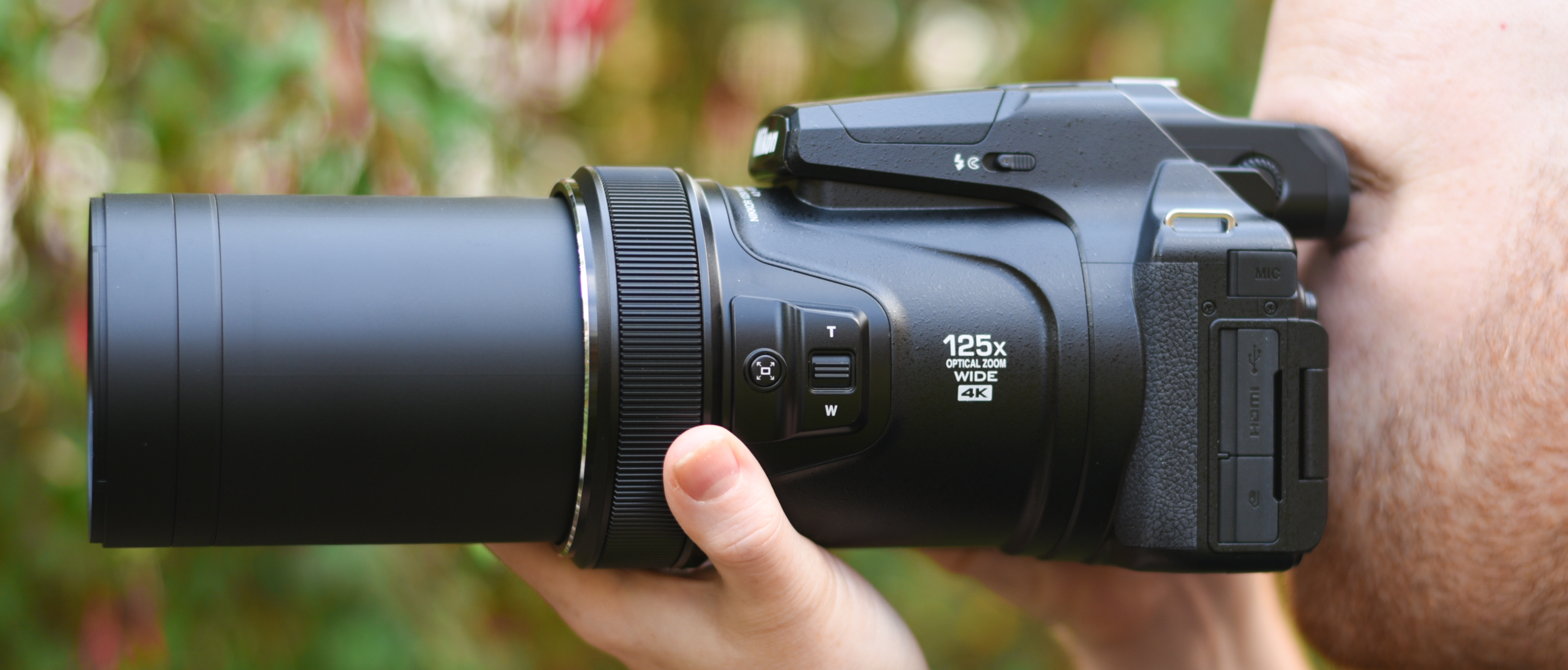TechRadar Verdict
The P1000 is a curious beast. If you absolutely need a camera with a 3000mm-equivalent lens, the fact that the P1000 is alone in offering this makes your decision easy. With a huge body, less-than-reliable autofocus, a sub-standard LCD and operational strifes, however, its appeal for anything else is more limited.
Pros
- +
Unique 125x optical zoom
- +
Effective VR system
- +
Sharp shots at 3000mm possible (though difficult)
- +
Very good handling
- +
Raw shooting option
Cons
- -
Camera can lock up after bursts
- -
Autofocus struggles at times
- -
Below-average LCD
- -
No weather-sealing
- -
General image quality
Why you can trust TechRadar
Impossible Reach. Made Possible. That’s how Nikon bills its latest Coolpix P1000 superzoom camera, and it stretches what we’ve come to expect from superzoom cameras that bit further.
The reason is its lens: with a 125x optical zoom range equivalent to 24-3000mm in 35mm terms, it has the potential to home in on the most distant subjects you’d realistically want to capture, be it wildlife or the Moon.
Indeed, a camera like this will no doubt appeal the most to wildlife fans and astrophotographers, those who can’t quite justify spending a high four-figure sum on a super-telephoto optic – not that a 3000mm lens is available for mainstream systems anyway.
Features
- 24-3000mm (equiv.) f/2.8-8 lens
- 4K UHD video recording (30fps or 25fps)
- 2.36million dot EVF
Of course, in order to take advantage of such a extensive focal range, some concessions needs to be made.
The camera has a far smaller sensor than the average interchangeable-lens camera, for example, its 1/2.3in dimensions being the smallest we tend to find among fixed-lens cameras such as this one, although this is at least back-illuminated for better light-gathering capabilities.
The other compromise is size; the P1000 significantly larger and weightier than other superzoom cameras, which will be discussed more on the next page.
The sensor outputs images at 16.1MP in your choice of raw (NRW) or JPEG flavours (or both at once). Given that raw shooting was absent from the previous Coolpix P900, it's great to see it's made its way here.
Sign up for breaking news, reviews, opinion, top tech deals, and more.
Sensor: 16MP, 1/2.3-inch type CMOS
Lens: 24-3000mm (equiv.) f/2.8-8
Screen: 3.2-inch vari-angle, 921k dots
Burst shooting: 7fps
Autofocus: Contrast-detect AF
Video: 4K (30/25p)
Connectivity: Bluetooth and Wi-Fi
Battery life: 250 shots
Weight: 1,415g (including battery and card)
That 17-element, 12-group beast of an optic understandably doesn’t come with a constant maximum aperture running through the whole focal range. Instead, it runs from f/2.8-8, which would be disappointing to see elsewhere, but is somewhat respectable here when you consider just how ambitious that lens is.
And, if at any time you feel that 3000mm isn’t quite long enough for whatever it is you want to shoot, you can digitally boost this to a setting equivalent to 6000mm using the Dynamic Fine Zoom setting.
Unsurprisingly, Nikon has focused on ensuring that you can still get crisp images when you travel into those four-figure settings, which comes by way of a Dual Detect Optical Vibration Reduction (VR) system. This promises compensation to the level of five additional shutter stops slower than would otherwise be possible. There’s also a VR Active mode that’s said to deliver greater stability in the viewfinder and on the rear display when you’re shooting from a moving vehicle or similar.
Other interesting points about the optic is that it allows for 1cm close focusing at its widest focal range in its macro setting, otherwise this is fixed to 30cm. At the telephoto end, however, you’ll need to be 7m away from the subject to be able to focus on the subject.
Look further into the spec sheet and you can see that, despite appearances, the P1000 isn’t all about its mammoth lens
Look further into the spec sheet and you can see that, despite appearances, the P1000 isn’t all about its mammoth lens. 4K UHD video recording is on board, recording in either 30fps or 25fps, so if you think about what you can capture at this resolution at the telephoto extreme, it makes an already special camera start to look even more unique. Even better, this also benefits from stabilisation, both from the lens-based VR system and an electronic VR option.
Full HD video options on top of that allow you to shoot to 60fps, and you can boost this further with a range of lower-resolution, slow-motion options. You can even take advantage of clean HDMI output, and it's even possible to plug an external microphone into the body through a port at the side of the camera – a very welcome feature when you consider that this isn’t something we tend to find on such models.
The standard PASM exposure quartet is accessible through the mode dial, while Auto and Scene modes join these. There are dedicated options on the model dial for both Moon and wildlife photography, and you can switch between and matrix, centre-weighted and spot metering options to help with nailing exposure. Shooting action? There's also a 7fps burst mode on hand.
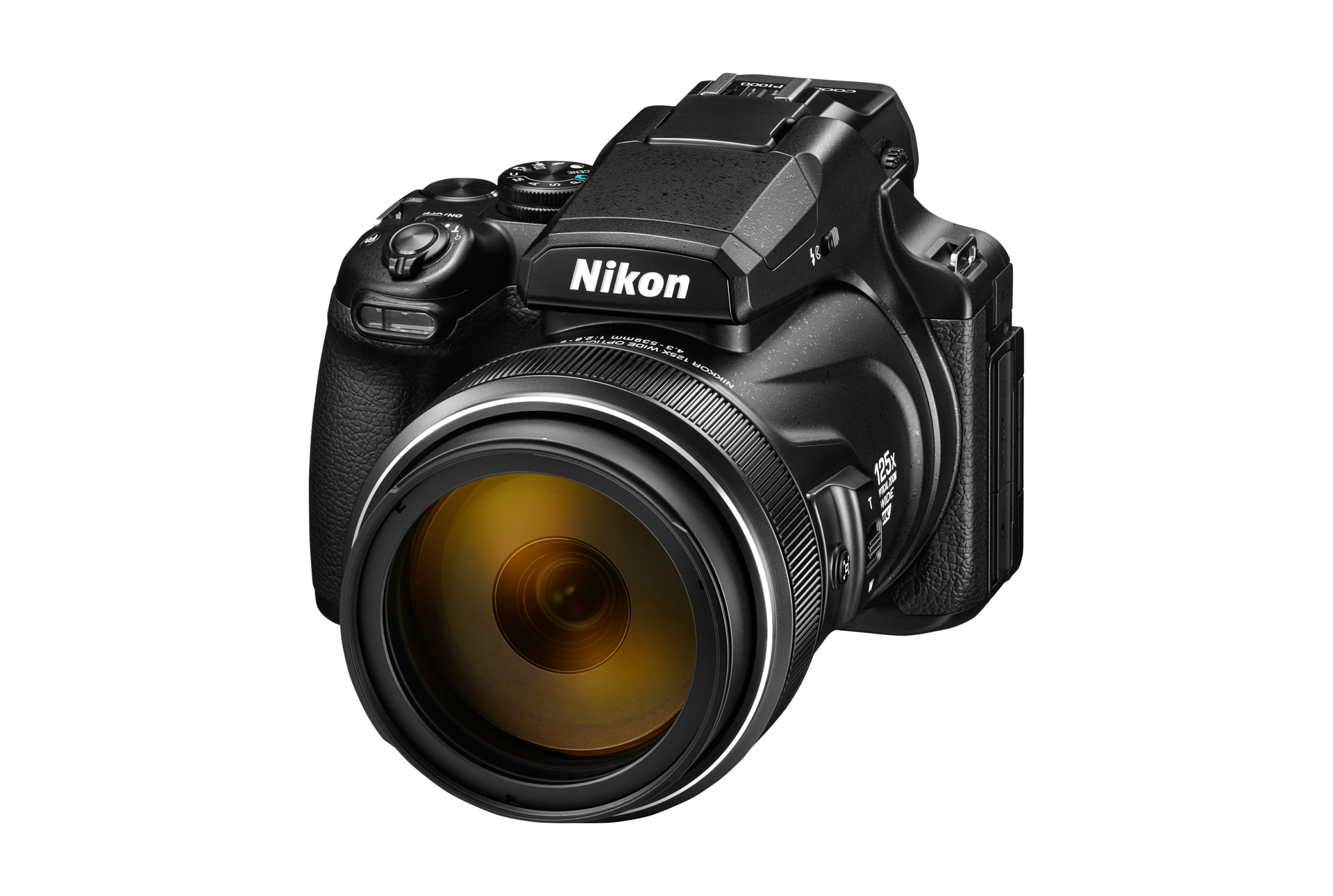
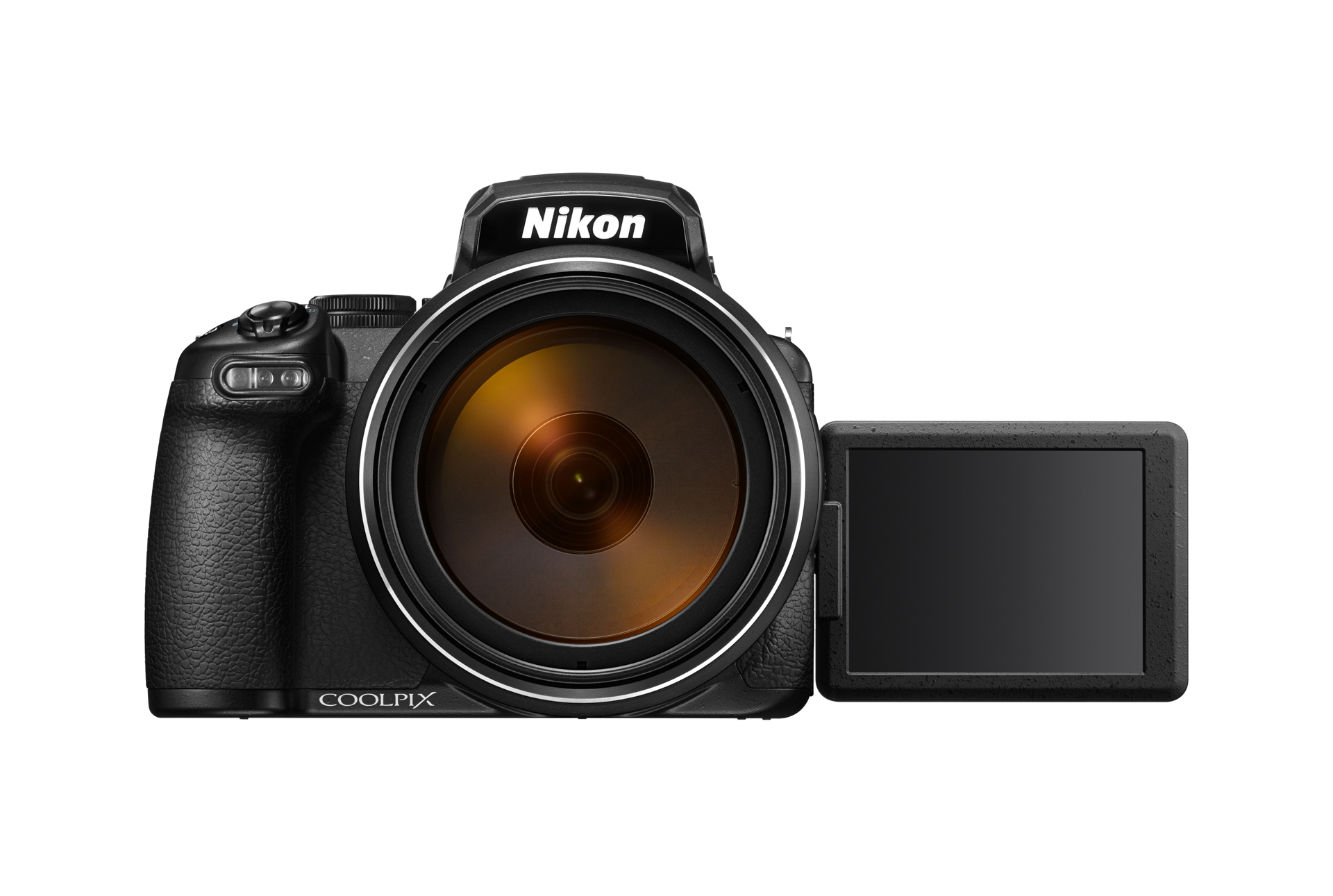


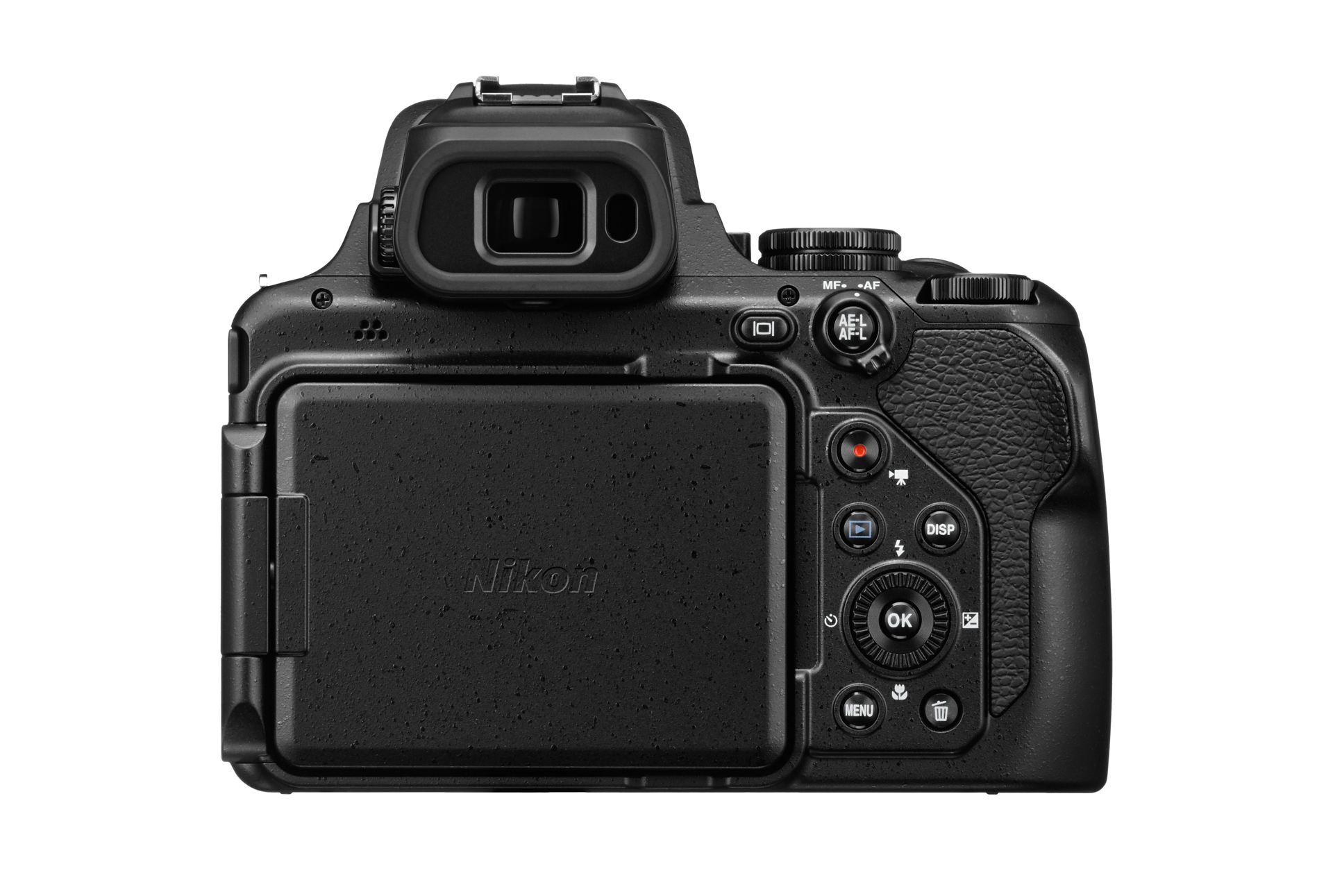
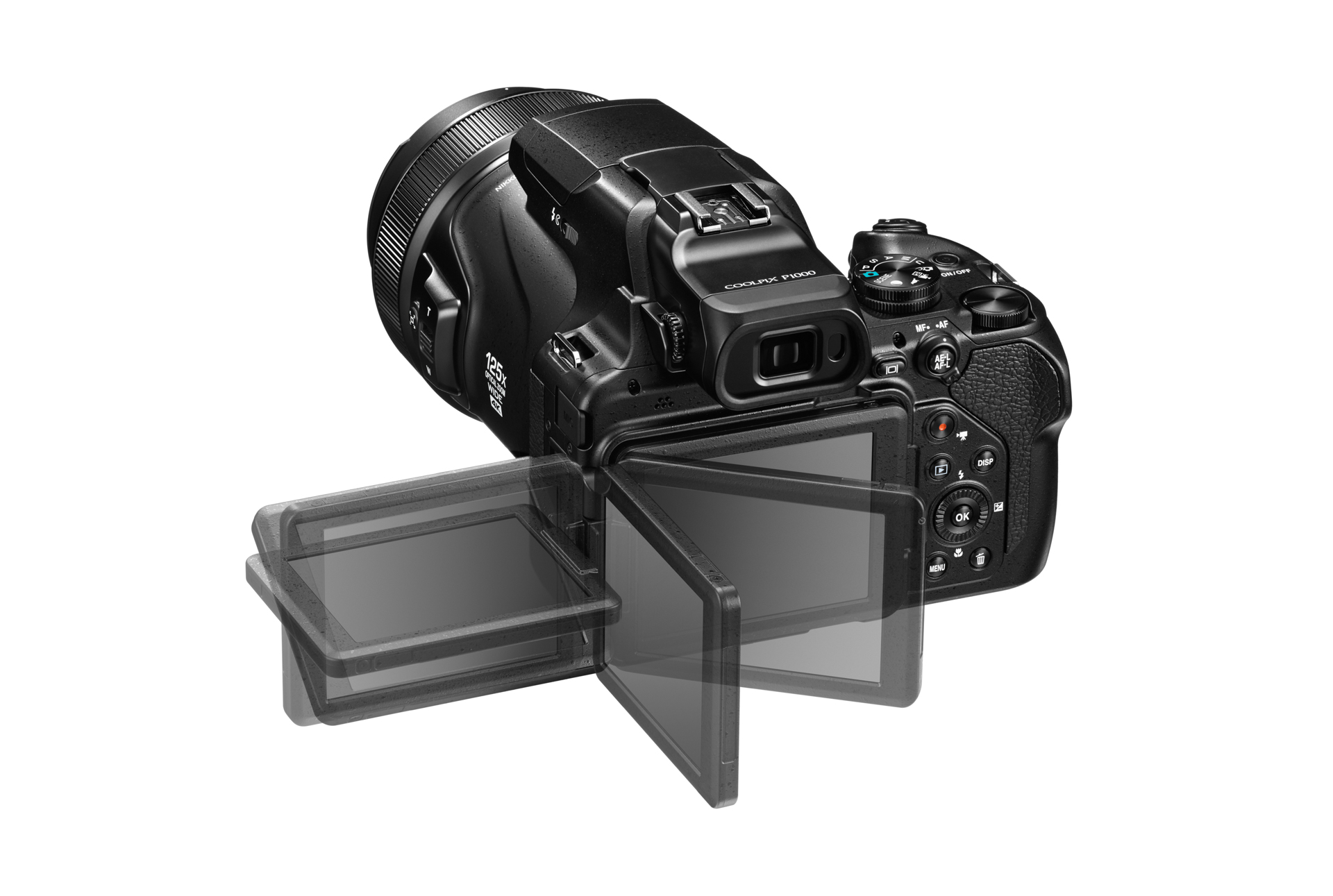
The partnership of a 3.2-inch LCD screen with a 921k-dot resolution and a 2.36-million dot EVF is pretty much what we expect on a camera of this kind, the latter being quite a boost over the 922k-dot resolution of the previous P900. The LCD has a vari-angle design that lets you angle it upwards or downwards, or even all the way around to face the same way as the lens, although, sadly, it lacks touchscreen functionality.
A hotshoe on the top plate accepts external Speedlight flash units and microphones, although you may find the integrated flash that pops up on demand to throw enough light on your chosen subjects. The camera also accepts the usual SDHC and SDXC cards, and even older SD types, should you have one or two knocking around.
Nikon’s SnapBridge feature allows for the camera to constantly be connected to a smart device, should would want to send images in real time over Bluetooth Low Energy, and working with the app has the further benefit of allowing GPS data to be incorporated into your creations (in lieu of an on-board GPS system). Not a SnapBridge fan or want to transfer videos? You can simply use Wi-Fi instead.
The camera's 250-shot battery life is perhaps to be expected for such a camera, but the fact that it can be charged through its USB port is an added convenience.
Build quality and handling
- Largely polycarbonate body with deep, rubbered grip
- 1,415g weight (with battery and card)
- 146.3 x 118.8 x 181.3mm
It’s somewhat difficult to appreciate just how big the P1000 is, and what it feels like in the hands, without seeing it in real life, so perhaps it’s more useful to compare it to some more familiar products.
Its 1,415g weight (with a battery and memory card) is precisely the same as the company’s flagship D5 DSLR. Its 181.3mm depth is just a fraction longer than the company’s AF-S NIKKOR 70-200mm f/4G ED VR lens – and that’s before you start to zoom that lens. You can wrap your palm around the outer lens barrel and still not be right up to the zoom ring. This isn’t a small camera that you’re going to want to have dangling from your neck for a casual day’s shooting.
Despite the size and heft of the camera, handling and operation are, for the most part, positive. Much of the camera's weight is, necessarily, in the optic; the rear of the camera isn't quite as heavy, which does create a slight imbalance, but the grip is nice and deep and both this and the rear thumb rest are coated in a thick rubber, all of which makes it feel far more secure in the hands than would otherwise be the case.
The rest of the camera, however, appears to be constructed from polycarbonate, which feels somewhat cheap. Furthermore, for a camera that's almost always going to be used outdoors, the lack of any weather-sealing is a pity, although this may difficult to fully achieve when you consider the movements of the lens barrel.

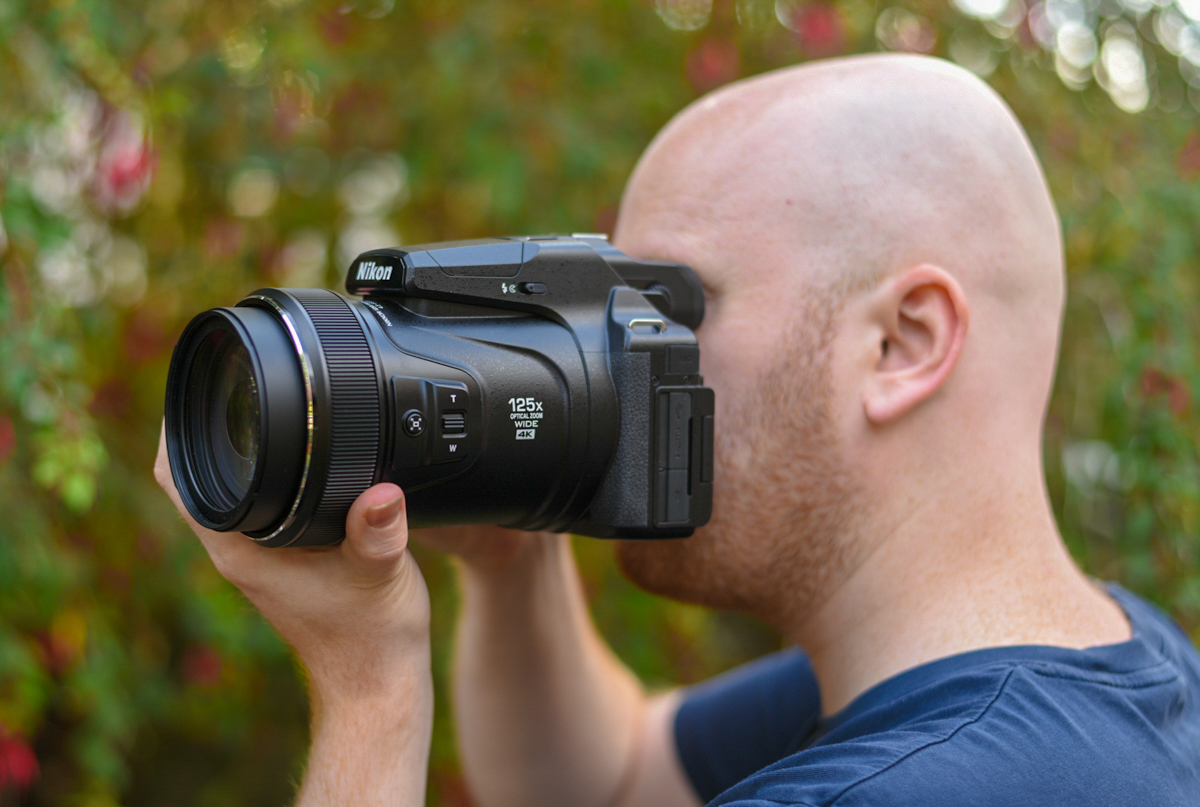
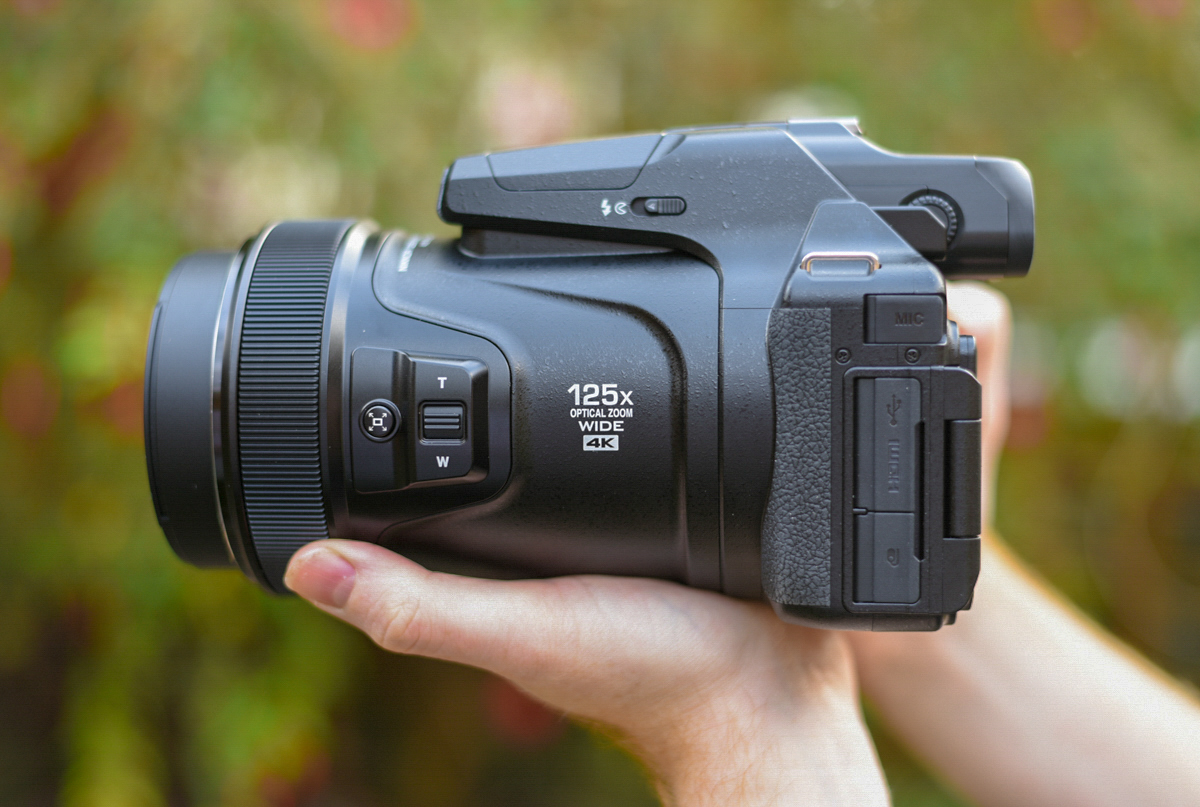
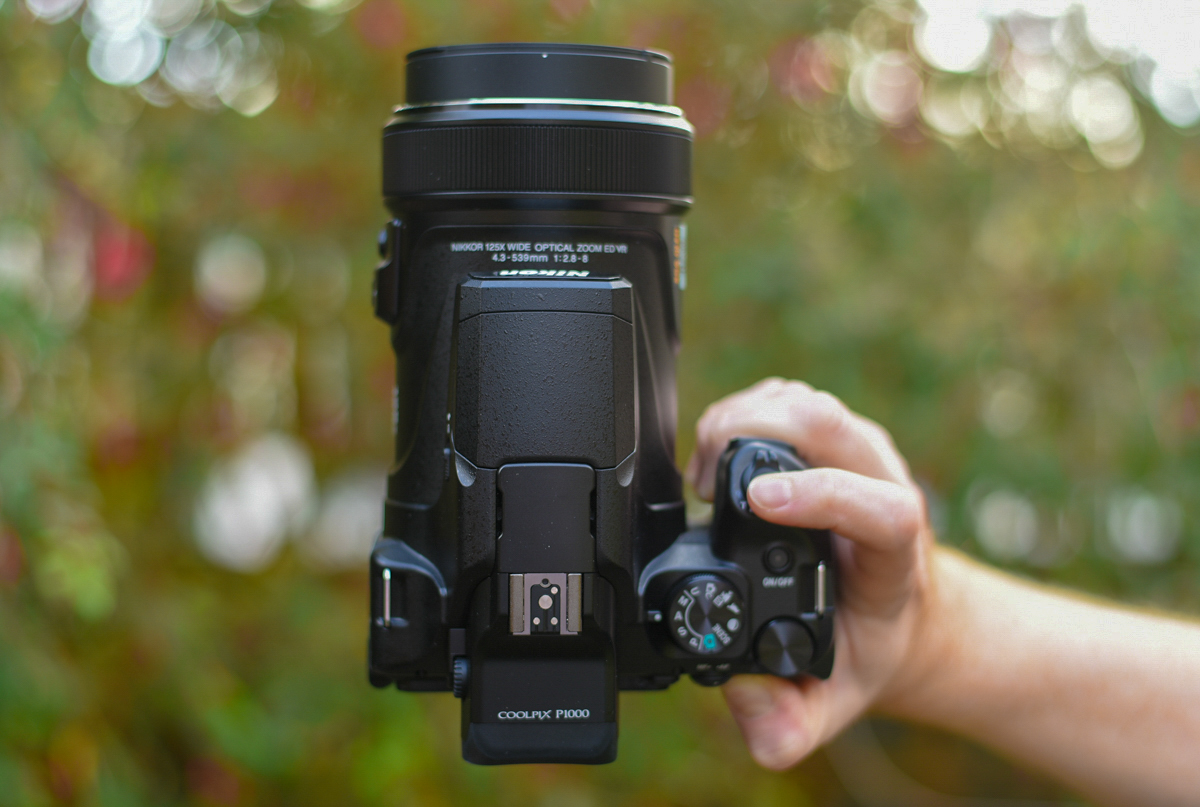
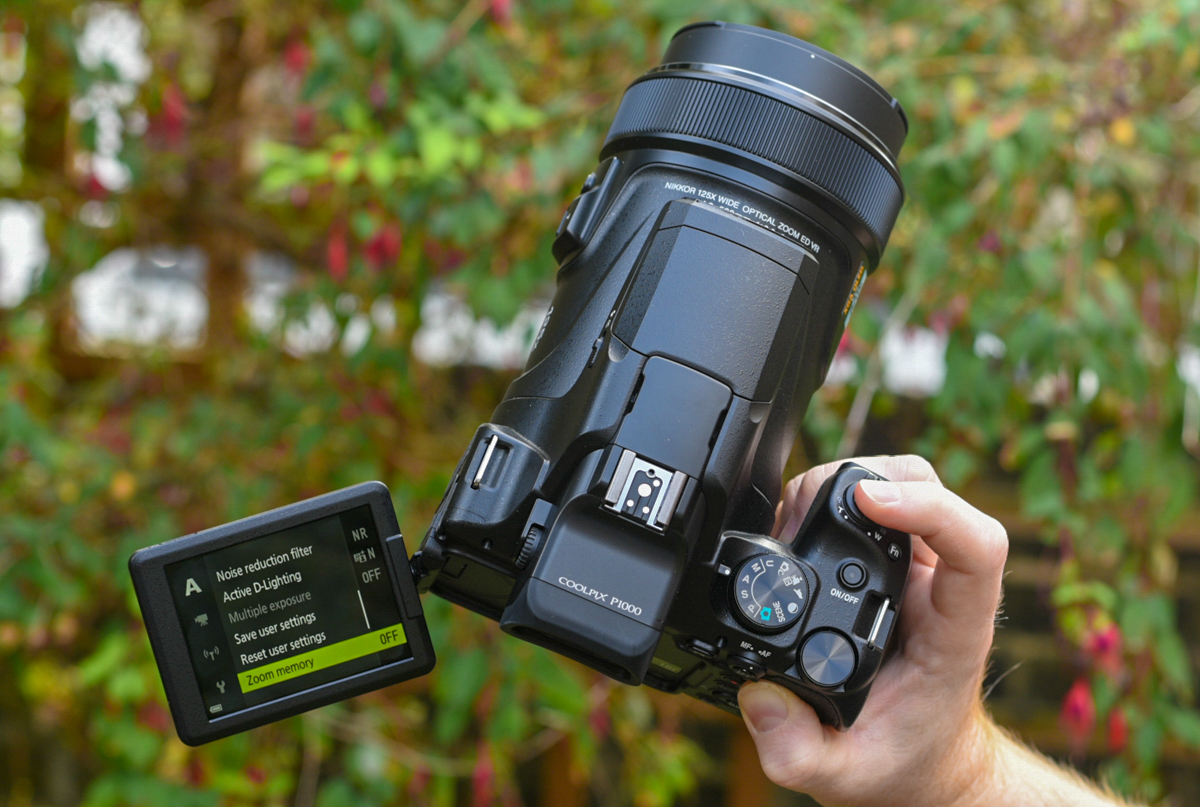
The camera's mode dial rotates effortlessly, and the LCD screen pulls away from the back of the body and tilts with ease. Given how unlikely it is that anyone will use such a camera for selfies or vlogging, the choice of a vari-angle screen rather than a more basic tilting one is perhaps a little strange, but this does at least give you maximum flexibility for portrait-orientation shooting.
The EVF is a decent performer in good light, although it's a little behind the standard of EVFs with this same resolution. Similarly, the LCD screen isn't too bad during daytime shooting, but it can present a muddied and desaturated view indoors and when light levels aren't brilliant.
Autofocus
- Contrast-detect AF system
- 1cm macro option
- Manual focus
At a time when phase-detect AF systems are fast becoming standard across cameras of all types, the P1000's contrast-detect AF system appears somewhat basic. That said, some contrast-detect systems are impressively sprightly, so the lack of phase-detect AF shouldn't immediately be seen as a negative.
Focusing options are comprehensive. In addition to the default option that can detect and prioritise faces, you can manually adjust the focusing point in spot, normal and wide sizes. You can also set the camera to track subjects, in addition to a Target Finding AF option that seeks out the main subject. Manual focus is also on hand.
The camera generally focuses in good time when set to wide-angle and moderate telephoto focal lengths, and when set to longer focal lengths it manages to pull between its focusing extremes relatively swiftly, but it can struggle to identify subjects – even in good light – and also tends to misfocus on occasion, giving false-positive confirmations.
It particularly struggles with more distant subjects when their contrast is affected by haze. A steady hand and a few repeated attempts with the focusing point pre-determined appears to the best solution, but for telephoto shooting it's remains less reliable than expected.
